You are using an out of date browser. It may not display this or other websites correctly.
You should upgrade or use an alternative browser.
You should upgrade or use an alternative browser.
Space Ship II, White Knight II - projects, flights, info
- Thread starter hesham
- Start date
- Joined
- 3 September 2006
- Messages
- 1,476
- Reaction score
- 1,473
This thread has taken a sad turn.
It may feel great and gratifying to show so much disdain from the high horse of someone's superior knowledge position. And pissing on everything in sight is soo cool in the internet culture.
Maybe the haughty disdainful critics could remember that Branson, Besos and Musk, in spite of all their foibles, oversize egos and whatnot, they are the ones who made it possible. With their personal money, talent, risk-taking and hard work.
Critics could compare with their personal achievements and contributions to mankind.
And maybe take off their hats and bow, instead.
One man's opinion.
It may feel great and gratifying to show so much disdain from the high horse of someone's superior knowledge position. And pissing on everything in sight is soo cool in the internet culture.
Maybe the haughty disdainful critics could remember that Branson, Besos and Musk, in spite of all their foibles, oversize egos and whatnot, they are the ones who made it possible. With their personal money, talent, risk-taking and hard work.
Critics could compare with their personal achievements and contributions to mankind.
And maybe take off their hats and bow, instead.
One man's opinion.
Virgin galactic way of doing it is also absolutely unique. I can't think of a glider pilot with a winning lottery ticket not rushing to get in-line for the highest civilian non-orbital glide path ever, the first ever certified commercial passenger glider and the fastest glider in the world. Think of it!
I hope that once they get confident, they opt to extend the gliding portion (unfeathered) to offer Mach1+ flight at a lower altitude and a Mach boom for family and friends down the range.
I hope that once they get confident, they opt to extend the gliding portion (unfeathered) to offer Mach1+ flight at a lower altitude and a Mach boom for family and friends down the range.
- Joined
- 3 June 2011
- Messages
- 18,348
- Reaction score
- 12,265
Who is denying their accomplishments? But astronauts they aren't.This thread has taken a sad turn.
It may feel great and gratifying to show so much disdain from the high horse of someone's superior knowledge position. And pissing on everything in sight is soo cool in the internet culture.
Maybe the haughty disdainful critics could remember that Branson, Besos and Musk, in spite of all their foibles, oversize egos and whatnot, they are the ones who made it possible. With their personal money, talent, risk-taking and hard work.
Critics could compare with their personal achievements and contributions to mankind.
And maybe take off their hats and bow, instead.
One man's opinion.
dannydale
ACCESS: Top Secret
- Joined
- 13 May 2007
- Messages
- 545
- Reaction score
- 410
This is the way.Spacer.
- Joined
- 9 October 2009
- Messages
- 21,979
- Reaction score
- 13,647
(Bloomberg, via MSN)
Hatchet job?
martinbayer
ACCESS: Top Secret
- Joined
- 6 January 2009
- Messages
- 3,402
- Reaction score
- 3,911
I just discovered by coincidence that the term was apparently coined in a related meaning by Isaac Asimov - I guess great minds think alikeThis is the way.Spacer.
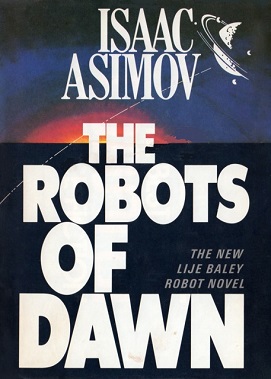
Robot series - Wikipedia
- Joined
- 9 October 2009
- Messages
- 21,979
- Reaction score
- 13,647
Virgin Orbit working on "evolved" rocket. NASA's Stennis Space Center says it reached a Space Act Agreement with Virgin Orbit last November for testing of a new version of the company's Newton 3 engine (N3.2). Testing of the thrust chamber assembly for this upgraded engine on the E-1 Test Stand, Cell 1, began March 30 and lasted through July 20. A total of 87 hot fire tests were performed during the testing period, with a combined test time of 974 seconds.
Design changes will appear in the Newton 3 engine ... "Virgin Orbit has been working with the Stennis test team since late 2020 on a variety of complex, engine-related activities," said Tom Alexiou, program manager for Virgin Orbit's evolved launch vehicle. "Their support of us has been exemplary in all facets of the program. We continue to maintain an excellent working relationship and look forward to our latest N3.2 engine development testing program that will take us into 2022." We'll try to get more details about performance upgrades for this "evolved" version of LauncherOne.

Rocket Report: Firefly completes static fire, Blue Origin gets HLS stay
“This requirement is in alignment with our US government customer.”…
 arstechnica.com
arstechnica.com
Flight domain excursion (elevation), entry glide cone alert and high winds:
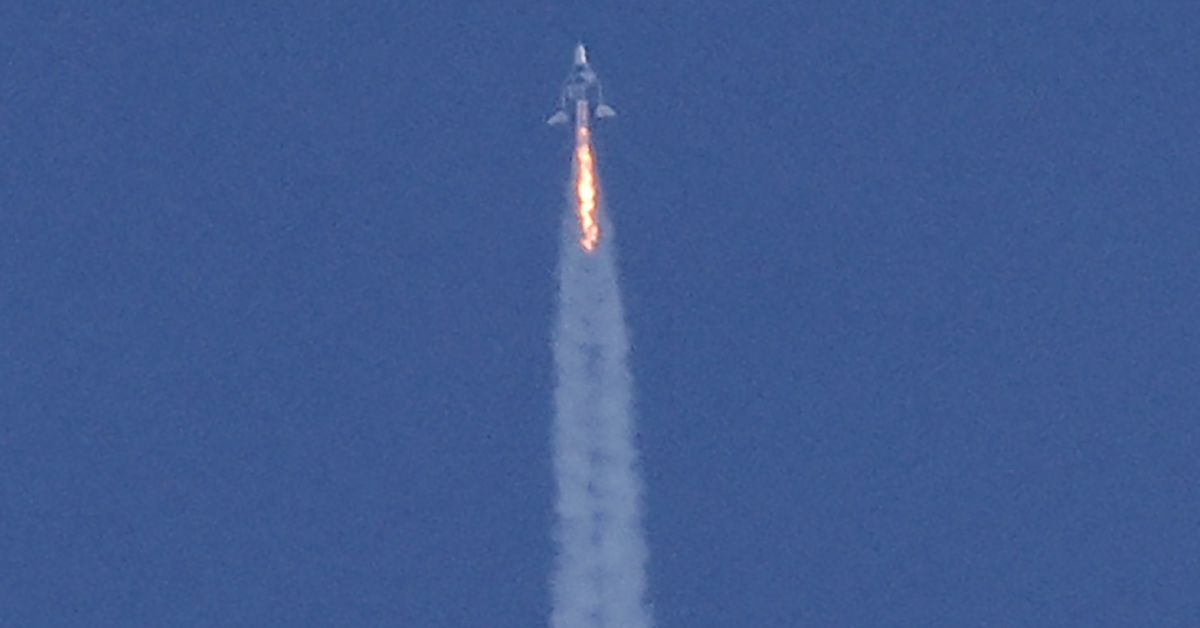
 www.reuters.com
www.reuters.com
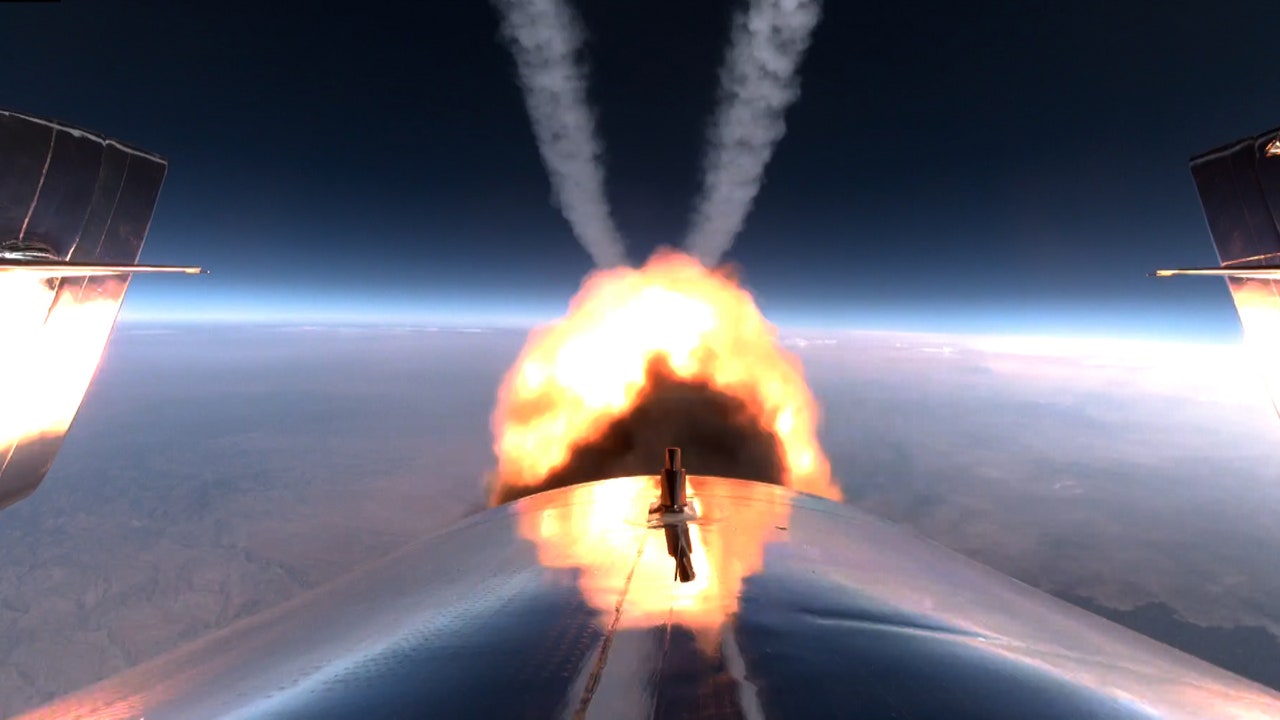
 www.newyorker.com
www.newyorker.com

U.S. aviation agency probes Branson's Virgin Galactic flight deviation
The U.S. Federal Aviation Administration (FAA) said Wednesday it is investigating a deviation in the descent of the flight of the Virgin Galactic rocket plane that carried British billionaire Richard Branson to the edge of space on July 11.

The Red Warning Light on Richard Branson’s Virgin Galactic Space Flight
The F.A.A. is investigating the ship’s off-course descent.
Last edited:
- Joined
- 13 August 2007
- Messages
- 8,463
- Reaction score
- 11,066
more info about that case

 arstechnica.com
arstechnica.com

Spaceship carrying Richard Branson flew off course [Updated]
Also, an explanation of why Mark “Forger” Stucky left Virgin Galactic.
 arstechnica.com
arstechnica.com
- Joined
- 9 October 2009
- Messages
- 21,979
- Reaction score
- 13,647
Indeed.
- Joined
- 18 June 2009
- Messages
- 1,412
- Reaction score
- 2,494
The Red Warning Light on Richard Branson’s Space Flight
https://www.newyorker.com/news/news-desk/the-red-warning-light-on-richard-bransons-space-flight
https://www.newyorker.com/news/news-desk/the-red-warning-light-on-richard-bransons-space-flight
Last edited:
- Joined
- 18 June 2009
- Messages
- 1,412
- Reaction score
- 2,494
US regulator grounds Virgin Galactic space planes as it investigates July flight
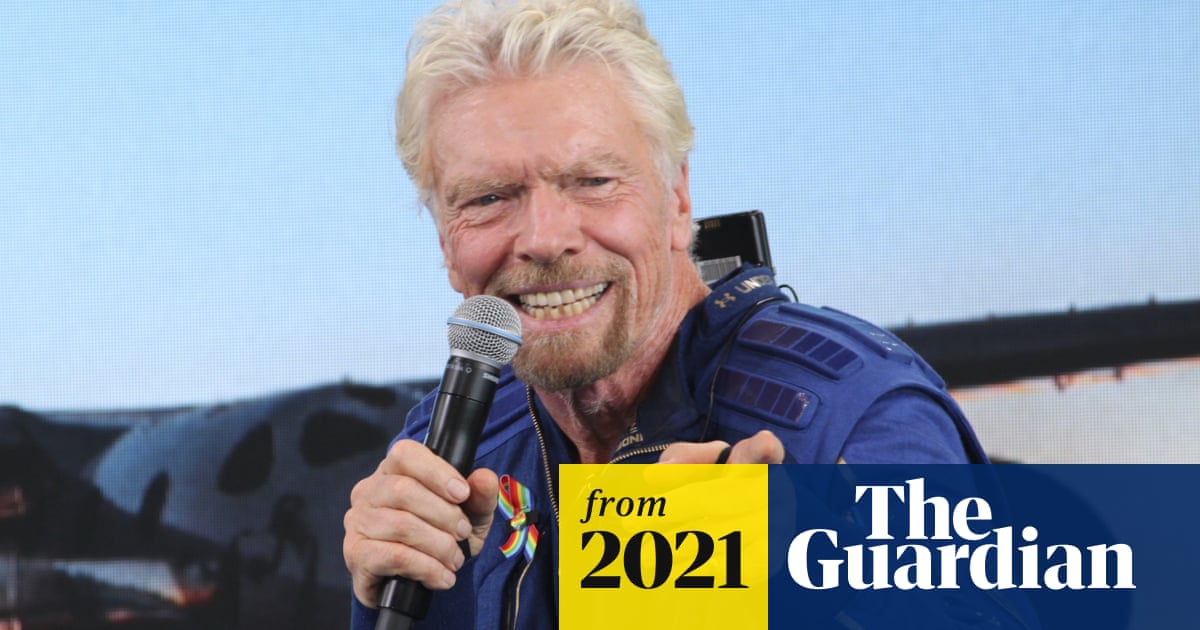
 www.theguardian.com
www.theguardian.com
"Virgin Galactic space planes, which the British billionaire Richard Branson used to launch his journey into space in July, have been temporarily grounded by the US Federal Aviation Administration (FAA) while it conducts an investigation into an issue that occurred during the 11 July flight.
“Virgin Galactic may not return the SpaceShipTwo vehicle to flight until the FAA approves the final mishap investigation report or determines the issues related to the mishap do not affect public safety,” the FAA said in a statement to the Guardian on Thursday."

US regulator grounds Virgin Galactic space planes as it investigates July flight
Billionaire’s flight to the edge of space veered off course during descent, prompting FAA inquiry
"Virgin Galactic space planes, which the British billionaire Richard Branson used to launch his journey into space in July, have been temporarily grounded by the US Federal Aviation Administration (FAA) while it conducts an investigation into an issue that occurred during the 11 July flight.
“Virgin Galactic may not return the SpaceShipTwo vehicle to flight until the FAA approves the final mishap investigation report or determines the issues related to the mishap do not affect public safety,” the FAA said in a statement to the Guardian on Thursday."
- Joined
- 21 January 2015
- Messages
- 12,166
- Reaction score
- 16,389
Considering their recent circumstances I am sure this isn’t in any way an ominous sign.
View: https://twitter.com/Stuck4ger/status/1442910698414084099
Greg Fredenburg, the @virgingalactic Head Of Flight Licensing & Regulatory Compliance (i.e. FAA Liaison) announces his departure from the company.
View: https://twitter.com/Stuck4ger/status/1442910698414084099
Forger left the company in July as well.Considering their recent circumstances I am sure this isn’t in any way an ominous sign.
Cleared by FAA

 www.bbc.co.uk
www.bbc.co.uk

Virgin Galactic cleared to resume space flights
Sir Richard Branson can launch his rocket plane again after making changes to flight procedures.
According to the company, tests conducted on the spaceship found “a possible reduction in the strength margins of certain materials used to modify specific joints.” No other details are provided, but Virgin claims “this new lab test data has had no impact on the vehicles.”
Even so, further physical inspection will be conducted, and pairing that with the enhancement program means flight 23 will have to wait some more. Again, no details on when that will happen have been given.
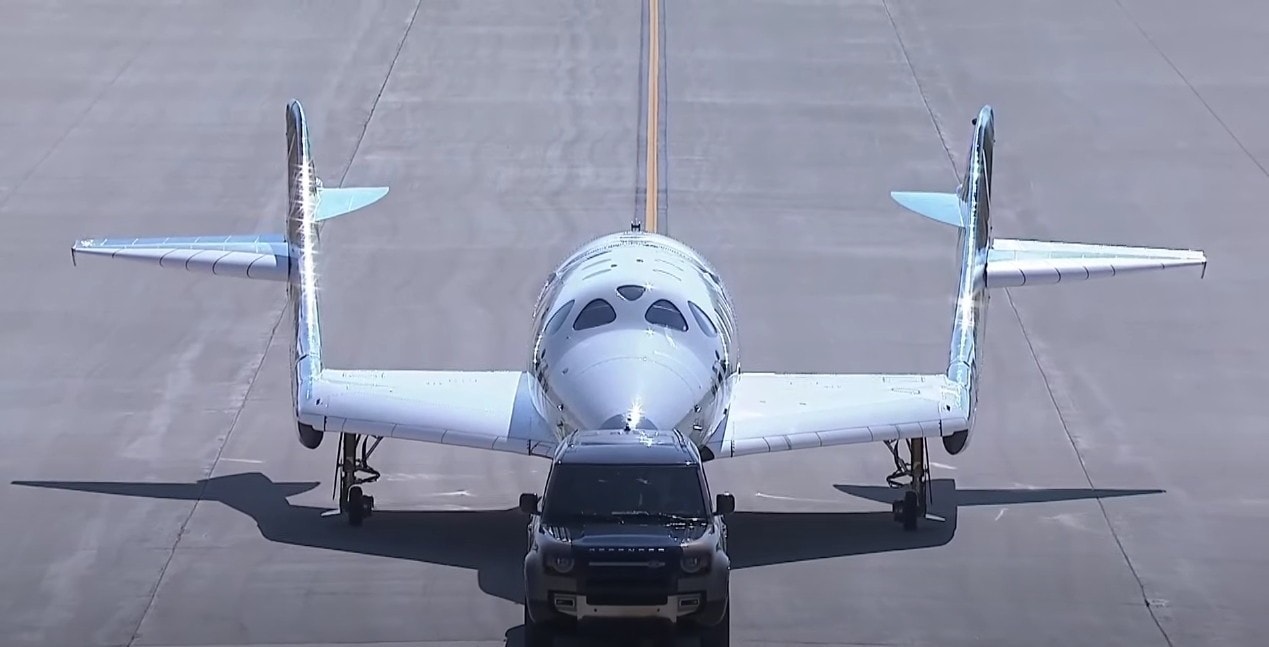
Virgin Galactic Finds Possible Issue with Its Spaceship, Begins Update Program
Just a few short days after Jeff Bezos and his Blue Origin managed to take William Shatner beyond the Karman line (at 90, the actor is now the oldest person to have done so), the competitors from Richard Branson’s Virgin Galactic announced they’re not quite launching their next flight as planned.
- Joined
- 9 October 2009
- Messages
- 21,979
- Reaction score
- 13,647
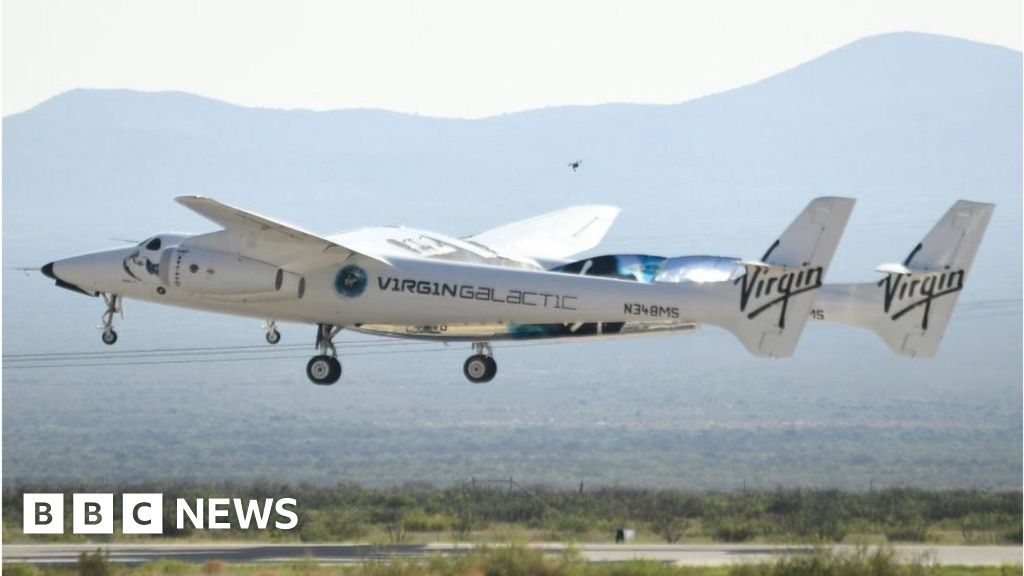
Virgin Galactic delays first commercial space flight
Shares in the firm dive 20% as it delays first tourist flight to make upgrades.www.bbc.com
- Joined
- 9 October 2009
- Messages
- 21,979
- Reaction score
- 13,647
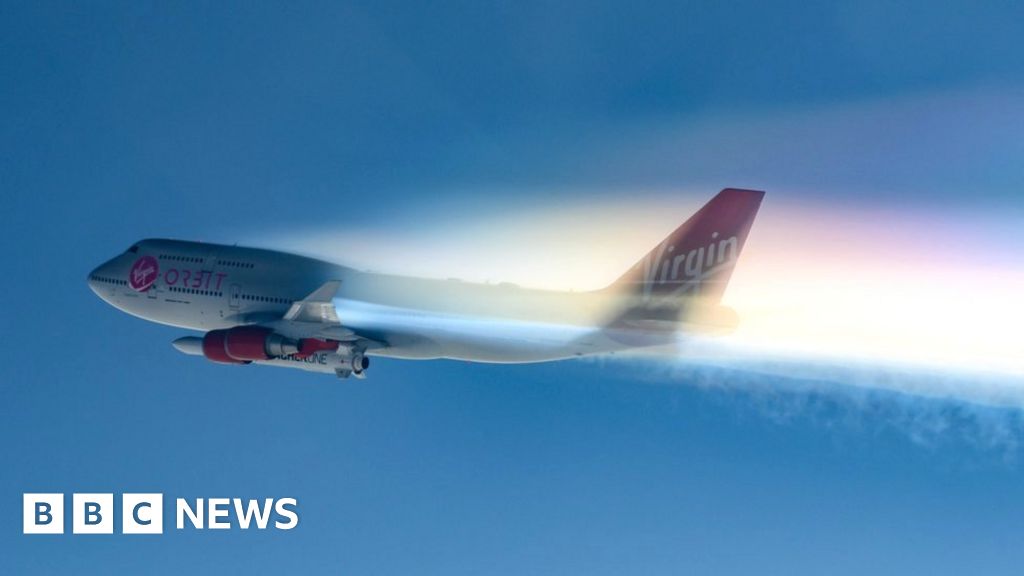
RAF man unleashes Virgin Orbit space rocket over Pacific
Fighter pilot Matthew Stannard leads a satellite launch mission for Sir Richard Branson.
- Joined
- 21 January 2015
- Messages
- 12,166
- Reaction score
- 16,389
Space tourism company Virgin Galactic released its financial results for the fourth quarter of 2021, and the full year, on Tuesday afternoon. As usual, for a company that has yet to begin commercial service of its space plane, the results were grim.
During the final quarter of 2021, Virgin Galactic reported revenue of $141,000 and a net loss of $80 million. The cumulative results were even more sobering. According to the publicly traded company's consolidated statements, Virgin Galactic has now lost $1 billion during the last two years.

Virgin Galactic has lost $1 billion during the last two years
“We achieved many important milestones in 2021.”…
 arstechnica.com
arstechnica.com
- Joined
- 21 January 2015
- Messages
- 12,166
- Reaction score
- 16,389
Reading the article it makes the point, a good one in my view, that’s going to be very difficult for them to ever make any money on this project.Lost? I have always thought that prototyping and demonstration phases were investments?!
Aurora contracted for 2 more Eve:
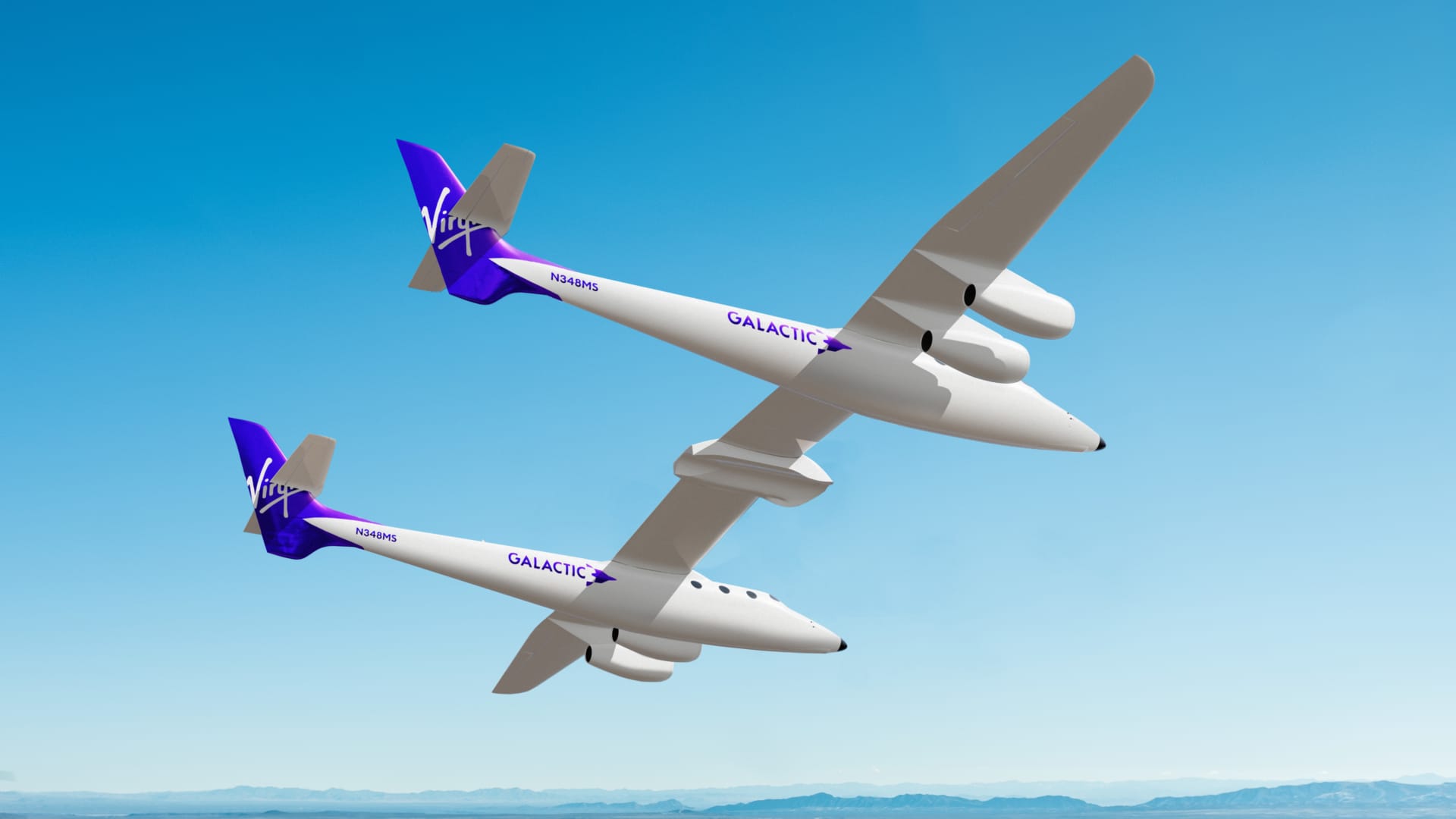
 www.cnbc.com
www.cnbc.com

Virgin Galactic announces deal with Boeing subsidiary to build additional aircraft 'motherships'
Space tourism company Virgin Galactic on Wednesday announced a deal with Boeing subsidiary Aurora Flight Sciences to build two additional carrier aircraft.
- Joined
- 21 January 2015
- Messages
- 12,166
- Reaction score
- 16,389
Virgin Galactic Selects Boeing Subsidiary Aurora to Build New Motherships
Agreement with Aurora Flight Sciences to Deliver Two Vehicles, Each Designed to Fly Up To 200 Launches Per Year First New Mothership Expected to Enter Service in 2025 Outsourced Manufacturing Approach Will Improve Speed to Market, Provide Access to Labor Pools, Minimize Supply Chain Disruption...
VIRGIN GALACTIC SELECTS BOEING SUBSIDIARY AURORA TO BUILD NEW MOTHERSHIPS
JULY, 06, 2022
Agreement with Aurora Flight Sciences to Deliver Two Vehicles, Each Designed to Fly Up To 200 Launches Per Year
First New Mothership Expected to Enter Service in 2025
Outsourced Manufacturing Approach Will Improve Speed to Market, Provide Access to Labor Pools, Minimize Supply Chain Disruption, and Realize Efficiencies
TUSTIN, Calif.--(BUSINESS WIRE)-- Virgin Galactic (NYSE: SPCE) (the “Company” or “Virgin Galactic”), an aerospace and space travel company, today announced an agreement with Aurora Flight Sciences (“Aurora”), a Boeing company, to partner in the design and manufacturing of the Company’s next generation motherships. The mothership is the air launch carrier aircraft in Virgin Galactic’s space flight system, that carries the spaceship to its release altitude of approximately 50,000 feet.
Headquartered in Virginia, Aurora brings more than 30 years of experience building cutting-edge aircraft from concept to delivery and specializes in novel aircraft configurations and complex composites. Virgin Galactic has been working with Aurora for the past several months to develop design specifications as well as workforce and resource requirements in preparation for this long-term project. The two-vehicle contract announced today will enable Aurora to immediately begin development.
Virgin Galactic Chief Executive Officer Michael Colglazier said: “Our next generation motherships are integral to scaling our operations. They will be faster to produce, easier to maintain and will allow us to fly substantially more missions each year. Supported by the scale and strength of Boeing, Aurora is the ideal manufacturing partner for us as we build our fleet to support 400 flights per year at Spaceport America.”
Virgin Galactic’s manufacturing strategy is designed to leverage third party suppliers to improve efficiency, access new innovation and technology, and tap into existing highly skilled labor pools. This allows the Company’s in-house team to focus on complex and critical elements such as design, engineering and final assembly.
Aurora plans to manufacture the aircraft at its Columbus, Mississippi and Bridgeport, West Virginia facilities. Final assembly of the motherships will be completed at the Virgin Galactic facility in Mojave, California.
“With Aurora, we are accessing the best of the nationwide aerospace ecosystem,” said Swami Iyer, President of Aerospace Systems. “As a subsidiary of the world’s largest aerospace company, Aurora has some of the industry’s top engineers and manufacturing facilities.”
Todd Citron, Boeing Chief Technology Officer and Vice President and General Manager of Boeing Research & Technology added: “Boeing is excited to contribute our culture of safety, our operational excellence, and our expertise in aircraft design and manufacturing to help advance human space travel. Today’s announcement expands our collaboration with Virgin Galactic to accelerate transformative aerospace technologies.”
“This partnership between Aurora and Virgin Galactic brings together teams that share a passion for aerospace, innovation, and exploration,” said Per Beith, Aurora President and CEO. “Aurora's decades of experience in aircraft design, composite manufacturing, and vehicle integration, coupled with our world-class engineers and manufacturing technicians, enables us to provide the unique expertise and capabilities necessary to complete these next generation aircraft. We're thrilled to have this opportunity to support Virgin Galactic’s mission to pioneer space travel.”
The first new mothership is expected to enter service in 2025, the same year Virgin Galactic’s first Delta-class spaceship is expected to begin revenue payload flights. The Company’s upcoming commercial missions are expected in Q1 2023.
You can download all press materials including images and b-roll from the Virgin Galactic Press Assets
- Joined
- 21 January 2015
- Messages
- 12,166
- Reaction score
- 16,389
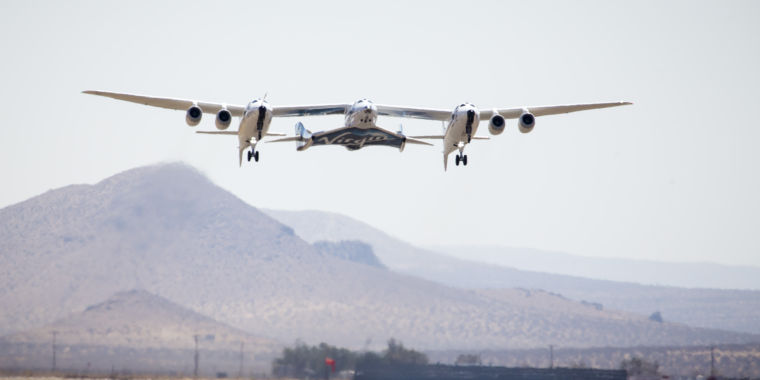
Looking to the future, Virgin Galactic purchases 2 more motherships
The company's goal is to fly 400 revenue flights a year.
- Joined
- 21 January 2015
- Messages
- 12,166
- Reaction score
- 16,389
Problem is they need to replace all their current flight hardware due to various issues with it. Only once that is done can they think of moving on.I'd like to know when Virgin Galactic is going to get off its' collective arse, finish the flight-tests (These are taking forever) and put it SpaceShip2 into money-making service?
Problem is they need to replace all their current flight hardware due to various issues with it.
That's the first time I've heard of this.
- Joined
- 21 January 2015
- Messages
- 12,166
- Reaction score
- 16,389
Wait for the outcome of the fraud trial.Problem is they need to replace all their current flight hardware due to various issues with it.
That's the first time I've heard of this.
Wait for the outcome of the fraud trial.
That is also news to me.
- Joined
- 16 April 2008
- Messages
- 9,616
- Reaction score
- 14,525
Wait for the outcome of the fraud trial.
That is also news to me.

Class Action Lawsuit Filed Against Virgin Galactic Alleging Securities Fraud
by Douglas MessierManaging Editor A class action lawsuit was filed in New York on Dec. 7 alleging securities fraud by Virgin Galactic, which went public on the New York Stock Exchange (NYSE) in October 2019 after merging with Chamath Palihapitiya’s Social Capital Hedosophia (SCH). Named in the...
It's a class action stockholder suit claiming that the stock lost value due to flaws that VG knew about but failed to disclose, and that Branson unloaded shares based on (essentially) insider information before the shares fell in value. The language in the suit is pretty extreme, which is typical. It's unusual in that this suit was initially brought by an ex-Virgin Galactic employee who now works for Blue Origin. So, yeah, some interesting conflicts there.
Don't read too much into Forger's hire by Blue after he left Virgin. There aren't that many "private" astronaut pilot types out there on the market.
Class Action Lawsuit Filed Against Virgin Galactic Alleging Securities Fraud
by Douglas MessierManaging Editor A class action lawsuit was filed in New York on Dec. 7 alleging securities fraud by Virgin Galactic, which went public on the New York Stock Exchange (NYSE) in October 2019 after merging with Chamath Palihapitiya’s Social Capital Hedosophia (SCH). Named in the...www.parabolicarc.com
It's a class action stockholder suit claiming that the stock lost value due to flaws that VG knew about but failed to disclose, and that Branson unloaded shares based on (essentially) insider information before the shares fell in value. The language in the suit is pretty extreme, which is typical. It's unusual in that this suit was initially brought by an ex-Virgin Galactic employee who now works for Blue Origin. So, yeah, some interesting conflicts there.
FWIW I've personally flown with both Forger and the president of Virgin Galactic so there's no comment here on any of that stuff.
- Joined
- 25 June 2014
- Messages
- 1,564
- Reaction score
- 1,499
I am sure Virgin would too. Almost all product development around the world has been set back by Covid; the more complex and blue-sky the programme, the harder the hit. I also think we should give Virgin credit for developing a fully re-usable and relatively low-gee manned space launch system. It's a tough double-challenge but it needs to be cracked if we are ever to go up there in significant numbers. The first few prototypes were always going to clarify how things should not be done.I'd like to know when Virgin Galactic is going to get off its' collective arse, finish the flight-tests (These are taking forever) and put it SpaceShip2 into money-making service?
Big-money lawsuits in the US take years, even decades. Likely the legal process will not grind to a halt until long after SpaceShip3 has entered service (and I'm not being optimistic about that timescale either).Wait for the outcome of the fraud trial.
Personally I don't hold out much hope for the investors. Most bleeding-edge aerospace startups fail miserably, and even the successful ones are often loss-making for several decades. Quite why they imagine Virgin Galactic to be different is anybody's guess, but I cannot imagine an experienced judge being impressed by their hyperbole.
aonestudio
I really should change my personal text
- Joined
- 11 March 2018
- Messages
- 2,967
- Reaction score
- 7,498
- Joined
- 21 January 2015
- Messages
- 12,166
- Reaction score
- 16,389
27 February 2023
VMS Eve Relocation Flight Q&A
VMS Eve is back! Back with VSS Unity at Spaceport America!
We asked Astronaut and Flight Test Engineer, Colin Bennett about the checks this powerful mothership is going through in the lead-up to beginning monthly commercial and research missions.
Eve returned home today to Spaceport America. What goes into planning a relocation flight and what exactly were you testing on the ship?
When we relocate the mothership from Mojave, California to Spaceport America, there’s a lot of coordination required. We need to submit requests to use the restricted airspaces in Mojave and Spaceport America and coordinate dual teams in two states.
Today’s flight was both a flight to relocate Eve to Spaceport America and the second functional check flight designed to validate the performance of the vehicle following recent modifications. We made many enhancements and upgrades last year to increase Eve’s flight rate capability that included a new launch pylon, new horizontal stabilizers, as well as upgraded avionics and mechanical systems. During today’s flight and the flight a couple of weeks ago, the pilots moved through a series of procedures and maneuvers to ensure the upgraded vehicle performed according to the expected models.
What was your role in today’s flight?
I was the Flight Director in our mission control center at Spaceport America. This role involves overseeing the engineers in the room and communicating with the pilots. We also had a Flight Director in our Mojave mission control center.
Have you ever flown in Eve?
Yes! Flying in the mothership is very cool. I’ve flown in a lot of different aircraft and of course, one very special spaceship, but Eve is unique! We sit on the left side, behind the pilots. We have a really good view of where the spaceship would be if we were carrying it. And the feeling is incredible. Without the spaceship, Eve is so light and powerful that the angle it’s able to climb at is very steep and very fast!
So, if you’re strapped into your seat, beyond enjoying that great view, how do you perform tests?
As a Flight Test Engineer, [today, my colleague Scott Raetzman flew in that seat], the role is to help the pilots execute the test cards by recording information for them. We also use a tablet that collects data; it monitors things like engine parameters and hydraulic pressures. The pilots have this data as well, but the FTE is an extra set of eyes to help the pilots during their busy flight test activities.
Speaking of the MCC, we have two-- one in Mojave and one at Spaceport. Seems like a lot of cooks in the kitchen!
(Laughs) Not at all. We perform testing in both locations, so having both mission control centers made a lot of sense. It’s like you’re sitting right next to each other even though you’re in different states. In today’s case, when Eve left Mojave, that MCC took the lead. Then, as we passed through the Arizona-New Mexico border, the Spaceport MCC reestablished telemetry. It’s a great advantage to have the ability to monitor missions from either or both locations!
When Eve flew its first test flight in mid-February, a lot of people watched via flight tracker websites and, honestly, it looked like someone playing on an Etch a Sketch! Why so many random turns in such a small area?
The area around Mojave is special restricted airspace. A number of operators, including the military use it and so do we. But it is a defined airspace and we have to stay within it. So, depending on the tests we’re performing, it can look like a lot of zig-zags, but it’s all intentional. To gather the test data we need for our computer models, we have to fly Eve in very particular test conditions, with specific airspeed, altitude and headings, for example.
Now that Eve is back at Spaceport, with VSS Unity, what’s next?
We’ll perform some more functional check flights which include pilot training. Then we move into ground testing with Unity mated underneath Eve’s giant wing. We’ll test the new pylon (the device that attaches Unity to Eve), running checks on the communication and camera systems, the cabin environmental controls and more.
Then, the home stretch. Eve will fly with Unity attached. They will fly to altitude and release Unity to perform a solo glide back to land at Spaceport. And finally, a fully-crewed rocket powered flight to space! These final validation flights run the vehicles through all final system and operational checks that provide us the data to finalize our models, which will clear the vehicles for commercial service!
Similar threads
-
-
"Cold War American Spacecraft Projects and the “Paperclip” connection."
- Started by Orionblamblam
- Replies: 9
-
-
-
